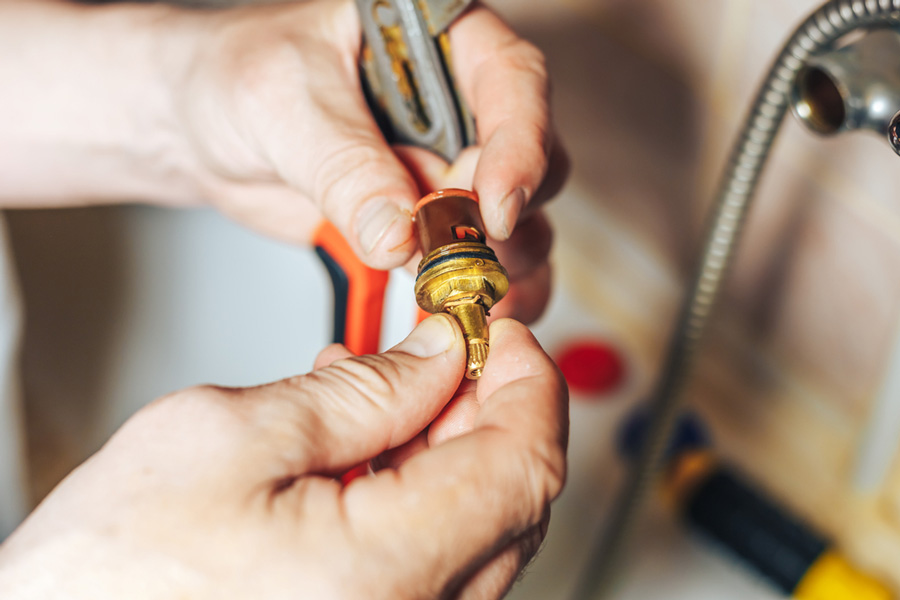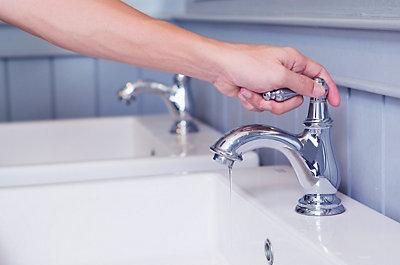Learning the Importance of Resolving a Broken Faucet
Learning the Importance of Resolving a Broken Faucet
Blog Article
This post down the page pertaining to Why Are My Faucets Dripping (And Can I Fix It Myself)? is especially intriguing. Give it a go and make your own findings.

Trickling faucets could look like a small inconvenience, but their effect surpasses simply the inconvenience of the noise. From wasting water to sustaining unnecessary economic costs and health and wellness risks, ignoring a dripping tap can bring about various repercussions. In this post, we'll explore why it's important to resolve this typical household problem quickly and properly.
Waste of Water
Ecological Effect
Trickling faucets add considerably to water wastage. According to the Epa (EPA), a single tap dripping at one drip per secondly can lose more than 3,000 gallons of water each year. This not only pressures water resources yet additionally impacts environments and wild animals dependent on them.
Financial Prices
Boosted Water Costs
Beyond the environmental effect, dripping faucets can inflate water expenses considerably. The accumulated waste with time translates into greater utility expenditures, which might have been prevented with prompt repair services.
Prospective Property Damages
Furthermore, long term leaking can lead to harm to components and surfaces surrounding the tap. Water buildup can create staining, deterioration, and even architectural problems if left unattended, causing additional repair expenses.
Wellness Problems
Mold and Mold Development
The consistent presence of moisture from a trickling tap develops an excellent atmosphere for mold and mildew growth. These fungi not only compromise indoor air quality yet likewise position wellness risks, especially for individuals with respiratory system conditions or allergies.
Waterborne Diseases
Stagnant water in leaking taps can end up being a breeding ground for microorganisms and other pathogens, enhancing the threat of waterborne diseases. Pollutants such as Legionella germs flourish in stagnant water, potentially bring about serious diseases when consumed or breathed in.
Do it yourself vs. Specialist Fixing
Pros and Cons of Do It Yourself Repair
While some may try to repair a dripping tap themselves, do it yourself repair work feature their very own set of obstacles. Without appropriate expertise and tools, do it yourself attempts can aggravate the problem or lead to incomplete fixings, extending the problem.
Benefits of Hiring a Specialist Plumber
Working with a specialist plumber ensures that the underlying reason for the trickling faucet is resolved efficiently. Plumbing professionals possess the experience and tools to detect and repair tap problems efficiently, saving time and lessening the danger of additional damage.
Step-by-Step Guide to Repairing a Dripping Tap
Devices Required
Prior to trying to deal with a trickling faucet, collect the necessary devices, including an adjustable wrench, screwdrivers, replacement components (such as washing machines or cartridges), and plumber's tape.
Usual Faucet Issues and Their Solutions
Recognize the sort of tap and the details issue triggering the drip. Common issues consist of worn-out washing machines, rusty valve seats, or malfunctioning O-rings. Describe maker guidelines or on-line tutorials for detailed assistance on repair services.
Preventive Measures
Normal Maintenance Tips
To prevent leaking faucets, execute regular upkeep such as cleaning up aerators, examining for leaks, and changing worn-out components immediately. Furthermore, think about installing water-saving gadgets or upgrading to much more efficient fixtures.
Significance of Prompt Services
Resolving dripping taps as soon as they're seen stops additional water wastage and prospective damage, eventually conserving both water and money in the future.
Effect On Building Worth
Assumption of Well-Maintained Property
Preserving a residential property in good condition, consisting of dealing with upkeep issues like leaking faucets, enhances its regarded worth and value among prospective buyers or tenants.
Impact on Resale Value
Qualities with well-kept plumbing components, including taps, command higher resale values in the real estate market. Dealing with trickling taps can add to a positive impact during residential property examinations and arrangements.
Ecological Responsibility
Private Contribution to Preservation
Taking duty for repairing leaking faucets aligns with more comprehensive efforts towards water preservation and environmental sustainability. Every person's actions jointly make a substantial influence on maintaining valuable resources.
Lasting Living Practices
By prioritizing punctual repairs and taking on water-saving habits, people contribute to sustainable living practices that profit both present and future generations.
Verdict
Addressing a trickling faucet exceeds mere ease; it's an essential action towards preserving water, reducing monetary costs, and protecting health and wellness and residential property. Whether via DIY repair services or expert help, taking action to fix dripping faucets is a small yet impactful way to promote accountable stewardship of resources and add to a much healthier, extra lasting future.
How to Fix a Leaky Faucet: Step-by-Step Repair Guide
A leaky faucet may seem like a simple annoyance, but if it's not fixed promptly, that leak could cost hundreds to potentially thousands. From water damage to mold, mildew, and high water bills, even a tiny leak can be catastrophic if left unattended. Damage like this can even affect the overall value of your home, so it's important to take the right approach for leaky faucet repair. You may need the help of a plumber in some cases, but we've got a few tips you can try on how to fix a leaky faucet before calling the pros.
Four Faucet Types
When you're learning how to fix a leaky faucet, the first step is knowing what kind of faucet you're working with! There are four common types.
Cartridge Faucets
Cartridge faucets come in one- or two-handled varieties. In one-handled cartridge faucets, hot and cold water combines in a single cartridge. In the two-handled versions, hot and cold water are controlled separately and mixed in the faucet.
Ball Faucets
Ball faucets have a single lever you push up and down to adjust the pressure and rotate to change the temperature. A slotted metal ball controls the amount of water allowed into the spout.
Compression Washer Faucets
They're the oldest type of faucet, but they're still used in many homes — especially older ones. Compression faucets have two separate handles that, when turned, raise or lower the washer that seals a water valve. This valve stops water from flowing through the faucet when it is turned off.
Disc Faucets
Disc faucets rarely need to be repaired due to their maintenance-free design. The water flow is controlled by two discs — the upper one raises and lowers against a fixed lower disc, creating a watertight seal. If your disc faucet starts leaking, you may need to replace the seals or clean residue buildup from the inlets.
Fixing a Leaky Faucet
Step 1: Turn Off the Water
Whether you're learning how to fix a leaky bathtub faucet or how to fix a leaky kitchen faucet, always turn off the water supply to your working area when you're fixing a leak. The last thing you want is a flood added to your list of things to fix.
Look for the shutoff valves below your sink or around the tub and turn them clockwise to stop the water flow. If your faucet doesn't have shutoff valves, you may need to turn off the water for the whole house. Check to make sure it's off by turning the faucet on. If nothing comes out, you're ready to start the repair.
Step 2: Take Apart the Faucet
How you disassemble your faucet depends on the type of fixture you have. You can use a flathead screwdriver to remove the caps on top of the handle or handles for cartridge and compression faucets. Inside, you should see handle screws. Unscrew these with a screwdriver to remove the handle.
Disc- and ball-style faucets will typically have an inlet screw near the handle, and removing that will reveal the interior of the faucet.
Detach the Valve Stem
For cartridge- and compression-style faucets, you'll see the inner valve stem or cartridge once you remove the faucet handles. If you have a compression faucet, unscrew the brass valve stem. If you have a cartridge faucet, pull out the cartridge. If your cartridge has been in place for a while, it may require some tools or extra force to remove it due to mineral deposits.
Examine and Replace Parts
Once you've removed the parts, check them out to confirm what needs to be replaced. You may see corroded rubber washers, O-rings, stems, or cartridges. On a ball-style faucet, check the seats and springs for damage.
If you need to repair a leaky disc faucet, check the inlet and seals on the lower disc.
Once you determine what parts must be replaced, visit your local hardware store. Bring the damaged parts with you to ensure you can purchase the correct components to replace them.
Clean Valves and Faucet Cavity
If you've removed a stem or cartridge, you may notice mineral buildup in the faucet's threads. Use white vinegar to clean the valve seat by soaking it for a few minutes, then scrub it away with a soft toothbrush and rinse with warm water. You can also clean the interior of the faucet in the same way.
Reassemble the Faucet
Once your faucet is cleaned and the required parts have been replaced, it's time to reassemble it. Put the pieces back together and slowly turn the water supply back on. Doing this slowly is crucial because too much initial water pressure can damage the new hardware you've just installed.
https://homewarranty.firstam.com/blog/how-to-fix-leaky-faucet

I ran across that piece of writing on Why It's Important to Fix Leaky Faucets while doing research the internet. Remember to take the time to share this content if you enjoyed reading it. Thanks a lot for your time. Don't forget to visit our site back soon.
Report this page